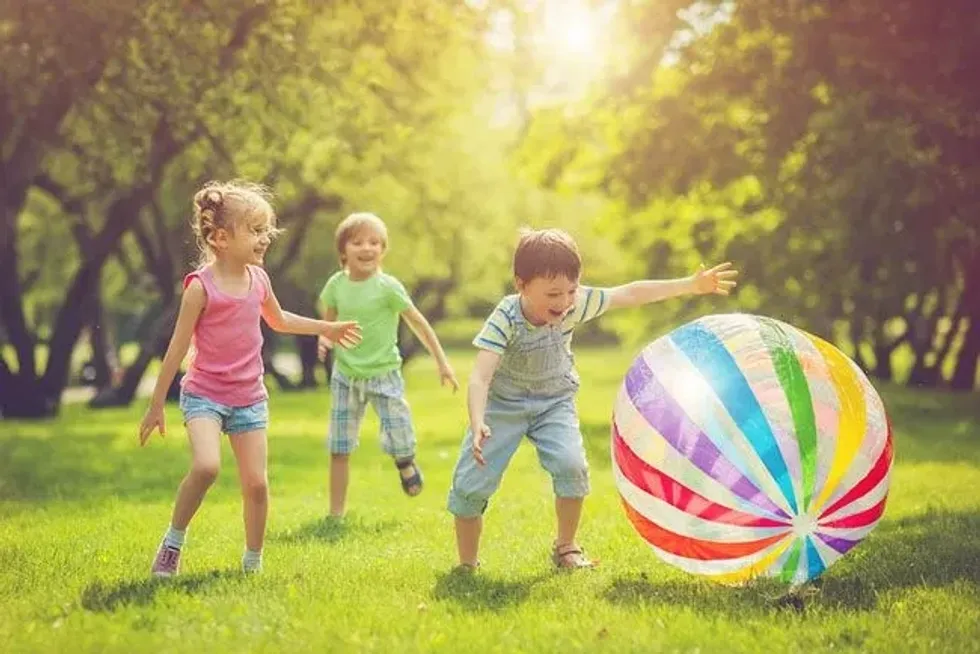Children have had a rough time of it lately. Many will have seen their schools and nurseries closed through coronavirus lockdowns. Almost all have been deprived of meeting friends.
With nurseries back open, and schools soon to follow, children are mingling freely again. But the rules on meeting up outside of those settings are tighter. How many people can your child socialise with, and what can you safely do on a playdate?
Note: The following guidance is based on UK Government advice for England as of mid-August 2020. This advice may change, and is also subject to local variation in the case of renewed lockdowns. Always consult the government website for the latest information.
Where to do a playdate
The safest place to meet other people is outdoors. The virus is not as effectively spread in the open air, and you’re less likely to be touching surfaces. Parks, beaches, country parks, woods and other open spaces are all fair game.
Since June, families have also been allowed to visit other houses. It’s perfectly fine to go on a playdate to someone else’s house, or invite them over to your place -- with the caveats outlined below.
It’s also now possible to meet up in other indoor spaces, including leisure centres, softplay centres and similar recreational facilities.
What’s The Law On Meeting Other Households?
How many people can you meet on a playdate? It depends on where you’re meeting.
Outdoors: Six people from multiple households can meet outdoors (this includes parks and private gardens). Larger groups (of up to 30) can form if the members come from just two households.
This has implications for playdates. For example, two larger families with, let’s say, two parents and four children in each household, can happily meet in a park -- a total of 12 people. But you can’t get a mere seven people together if they’re drawn from three or more households.
It is possible to get children from three different families together, so long as each is accompanied by just one parent or guardian (making a total of six people).
It’s all a bit confusing, but makes sense if the aim is to reduce transmission between households. However big the group, members of different households should observe social distancing rules wherever possible (and we’ll come on to that).
Indoors: Only two households may meet indoors. There’s no way you can do an indoor playdate with children from more than two households without breaking the rules.
As long as the group members come from just two households, the gathering can include up to 30 people. You are allowed to change which household you meet up with on any given occasion, just not more than one other household at any one time.

How to stay safe on a playdate
The first rule is no contact. You shouldn’t get within a metre (ideally two) of someone from a different household (unless they’re part of your ‘support bubble’, but that’s not relevant for most playdates).
Obviously, this is going to be very challenging to stick to where small children are concerned. Their natural instinct is to clamber all over each other, even if they’ve been told not to. The government’s advice seems to acknowledge this.
The phrase “wherever possible” is used nine times when discussing social distancing. “Wherever possible” implies that there will be times when social distancing is not possible. It’s reasonable to assume that playdates are one of those occasions.
You should still discourage play activities that involve contact as much as you can, but don’t feel guilty or criminal if boundaries do blur a little. You can do your bit by observing your own social distance from those you don’t live with, and making sure hands and surfaces are regularly cleaned.
The safest playdates are those that don’t involve toys or games being shared between households. Playing hide-and-seek or sporting activities in a park will be lower risk than letting the children sit around in a bedroom sharing toys.
If they are going to be breaking open the lego or playing with action figures, consider wiping these down before and afterwards, or soaking in a cleaning fluid like Milton. And, of course, wipe down any door handles, toilets, sinks and other commonly touched surfaces before and after an indoor playdate.
Playdates in playgrounds are another option. It’s not without risk, such as surface transmission from play equipment and the likelihood that your kids will get a bit too close to other kids. See our guide on the safe use of playgrounds for tips on how to navigate that one.
Online playdates
Of course, the safest form of playdate is an online playdate. Most parents will, by now, have already organised a Zoom meetup or a WhatsApp gathering.
They’re nowhere near as rewarding as a physical meet-up, and small children don’t always get into the swing of it.
The one advantage (besides lack of any virus danger) is that you can get together many more children in one go -- though bear in mind that a Zoom call with 20 preschoolers is likely to be anarchic at best.









